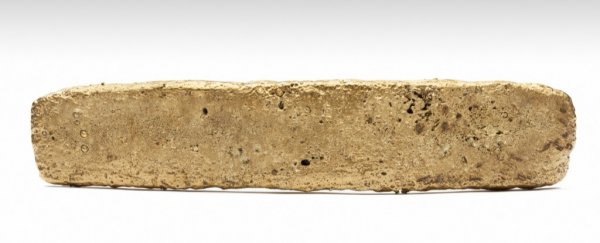A gold bar found in a Mexico City park in 1981 was part of the Aztec treasure looted by Hernan Cortes and the Spanish conquistadors 500 years ago, a new study says.
The 1.93-kilogram bar was found by a construction worker during excavations for a new building along the Alameda, a picturesque park in the heart of the Mexican capital.
For 39 years, its origins remained a mystery.
But thanks to specialized X-rays, Mexico's National Institute of Anthropology and History (INAH) says it has now confirmed where the bar came from: the Spaniards' hasty, though temporary, retreat during the so-called 'Noche Triste', or 'Sad Night'.
That night - 30 June 1520 - the Aztecs, furious over the slaughter of their nobles and priests, drove the Spanish invaders from their capital, Tenochtitlan.
The conquistadors escaped with as much looted Aztec treasure as they could carry, including, apparently, the gold bar in question.
"The so-called 'Noche Triste' is among the episodes of the conquest that will be remembered this year, and there is only one piece of material evidence from it: a gold bar that sank 500 years ago in the canals of Tenochtitlan, and which recent analysis confirms came from the (Spaniards') flight," INAH said in a statement.
Cortes and his men received a wary welcome from Aztec emperor Moctezuma when they arrived in 1519, but soon became unwanted guests at the palace as they appropriated his treasure and turned him into a virtual hostage.
In June 1520, Cortes - who had launched his expedition in Mexico without official authorization - learned that the Spanish governor in Cuba had sent a party of soldiers to arrest him.
He left his lieutenant Pedro de Alvarado in charge at Tenochtitlan and went with part of his army to fight the arriving soldiers, ultimately defeating them.
While he was gone, however, Alvarado began to fear the Aztecs would attack him, and had their nobles and priests killed.
The Aztecs revolted, and the Spaniards retreated - apparently losing the gold bar along the way.
The study found the bar's composition matched that of other Aztec pieces from the period.
"This bar is a key piece in the puzzle of this historical event," INAH said.
